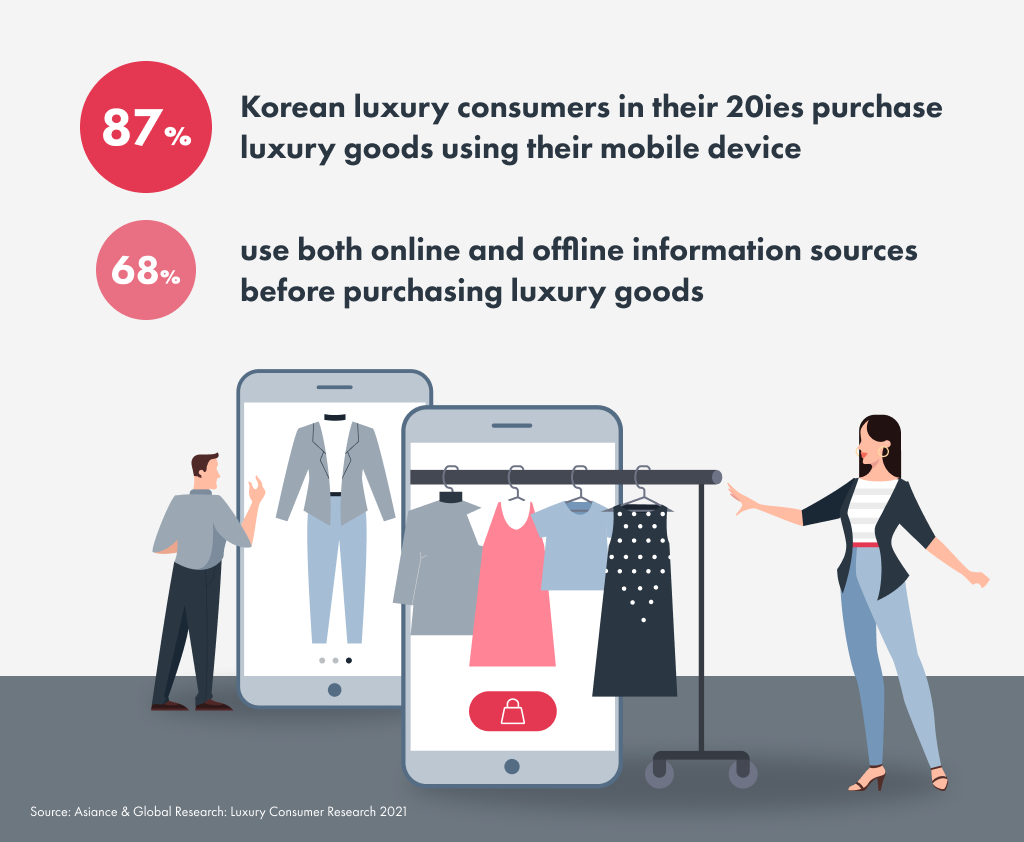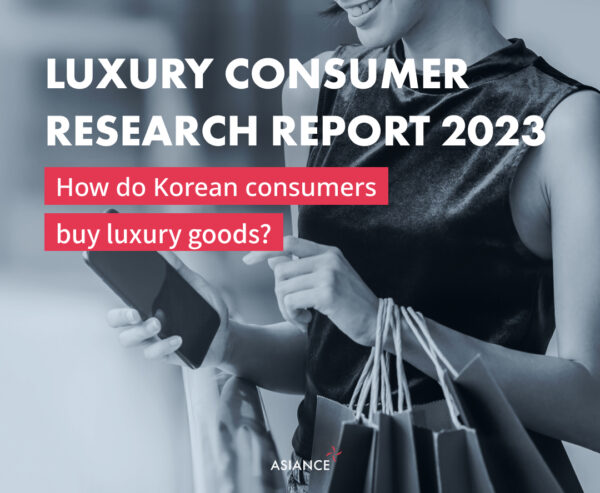In partnership between Asiance and Global Research, a survey with 1005 luxury goods consumers in December of 2020 was conducted. The research aims to understand online purchase behavior and the impact online media has on the purchase of luxury goods. It is assumed that a lot of the responses were influenced by the COVID-19 outbreak, however, it was generally observed that especially among younger generations, online channels play an increasingly important role in luxury consumption.
Luxury Consumption Clusters Groups
7 clusters of different luxury consumers were identified. The clusters differentiate from each other in terms of different combinations of psychographic and demographic variables. The two key psychographic variables are “Brand Loyalty & Affection” and “Luxury Consumption”. Those variables can be measured in levels low, medium, and high. The clusters are further divided into the age groups 20-30 and 40-60. The research reveals that especially online behavior of luxury consumer clusters vary a lot depending on these age groups.
How do Koreans buy luxury goods?
Purchase channels vary among clusters with the tendency that younger age groups are more open to online shopping for luxury goods. Consideration factors for shopping platforms also differed a lot between clusters, meaning that income levels determine where consumers purchase products and what online purchase entails for them.
The online purchase rate is 28% among luxury consumers and 57% of the online purchasers used the mobile device overall, however, there were also significant differences between clusters. When purchased online, the most used channels were department stores applications and websites with 37% respondent, followed by ‘Open Market’ channels with 28%, and cross-border or reseller channels with 18%. Whereas direct purchase from the brand’s official website was still low at 8%, 14% to 21% of respondents of age groups 20ies and 30ies have chosen that purchase route. Besides data about online purchase behavior, offline sales channels, expectations toward online luxury sales channels, purchase frequency, more relevant data were also collected.
What leads to the purchase of luxury goods?
Luxury consumers use a hybrid of online & offline routes to gather information prior to purchasing. Touchpoints in traditional and offline channels vary a lot among clusters. However, when asked about online touchpoints, there were more consistencies across cluster groups.
Besides data about luxury consumer’s consideration phase, preferred information sources and types, preferred marketing content types, more relevant data was collected.
When asked about the sources of information before purchase, the most named sources were visits to department and official brand stores, internet reviews (blog, cafe), department store online malls, and brand official website. Considering that Korean consumers rely on multiple sources, this illustrates that the customer journey comprises a mix of online and offline touch points. In fact, 68% claimed that they use both online and offline channels before purchasing. It is assumed that offline channels are important as 59% indicated that store display and salesperson’s explanation, as well as service, affect the purchase definition. This is an indicator that Korean luxury consumers still rely on physical experiences mainly to collect first-hand information, meaning that they want to ask product-related questions directly and see the products in greater detail. Recently and because of the pandemic, various online trends grew rapidly to overcome the hurdles of online shopping that lack certain experiences that consumers need from the offline. Many brands experimented with various online clienteling methods, as well as live commerce and one-on-one chatting services to provide personalized advisory. On the online platforms, leading brands refined and implemented various forms of AR and 360-degrees VR functions and enhanced product detail pages to bring the product closer to the online users. Trends that accelerate the shift from the offline to the online are expected to grow even more in the coming years.
More details and insights are planned to be provided through a research report.
Contact us at insight@asiance.com to get the extended research report.











